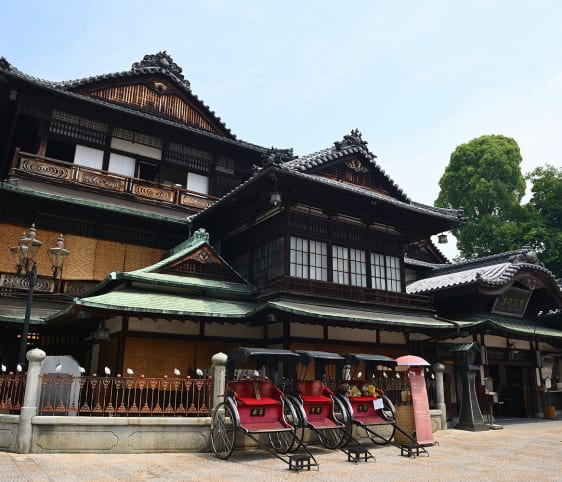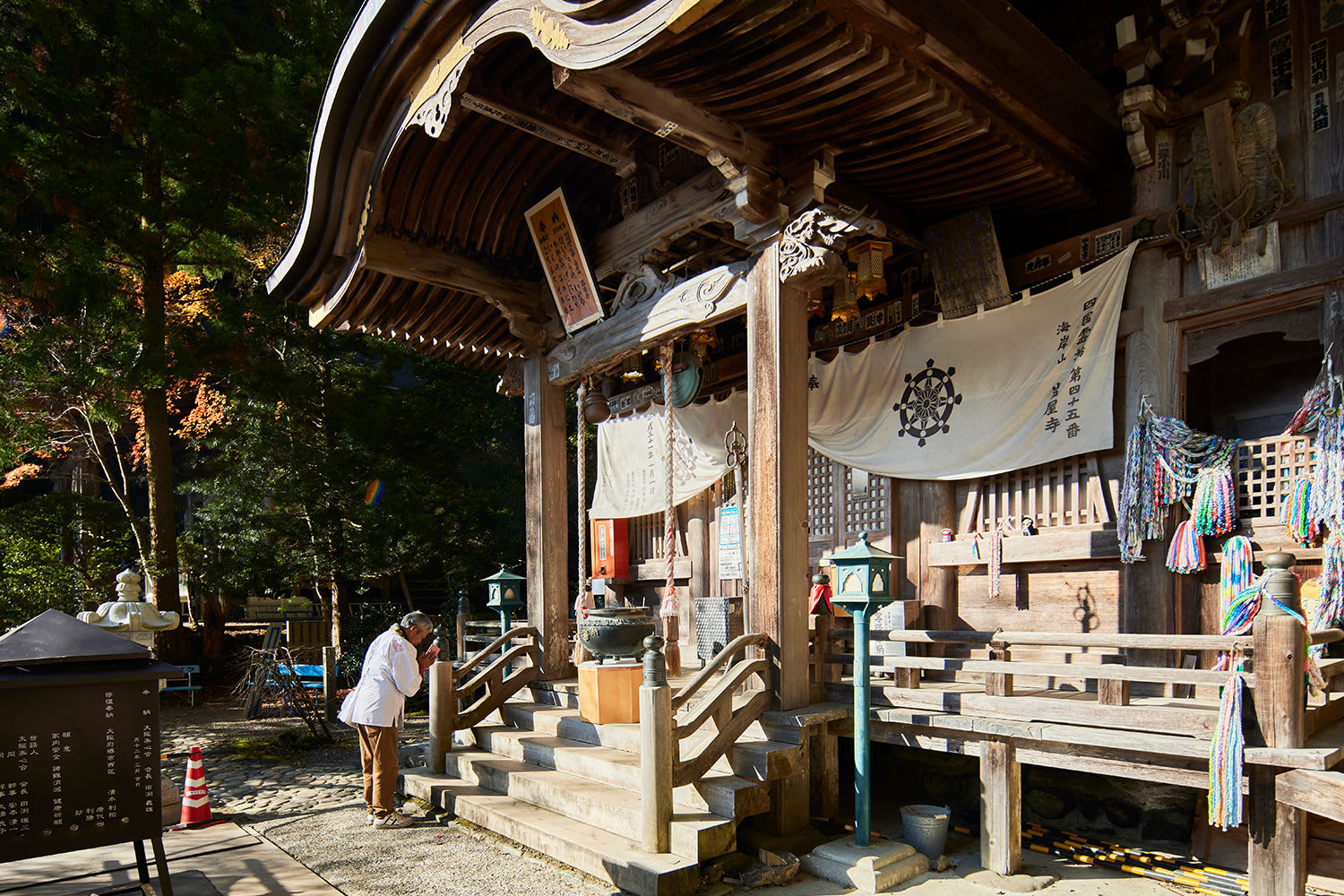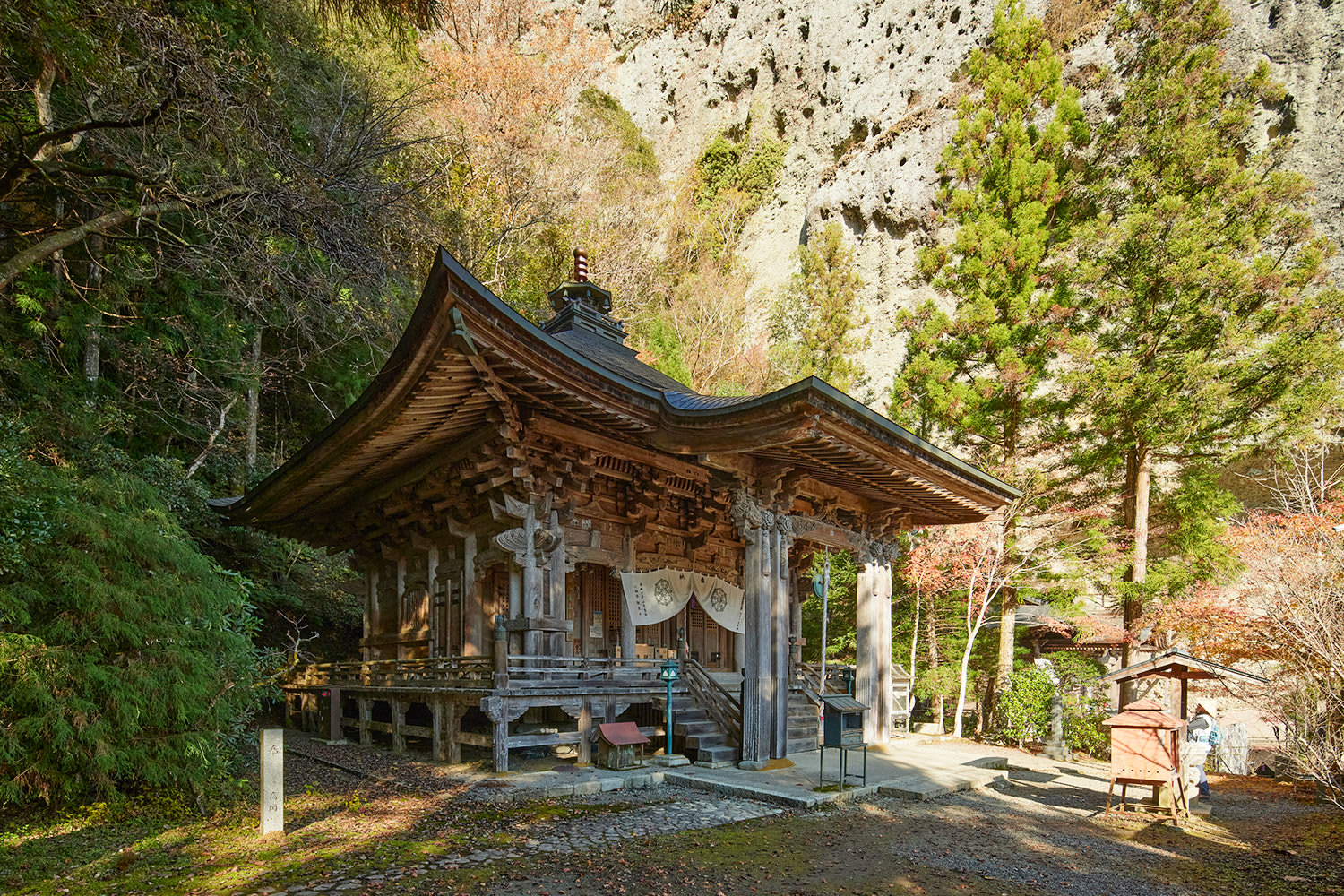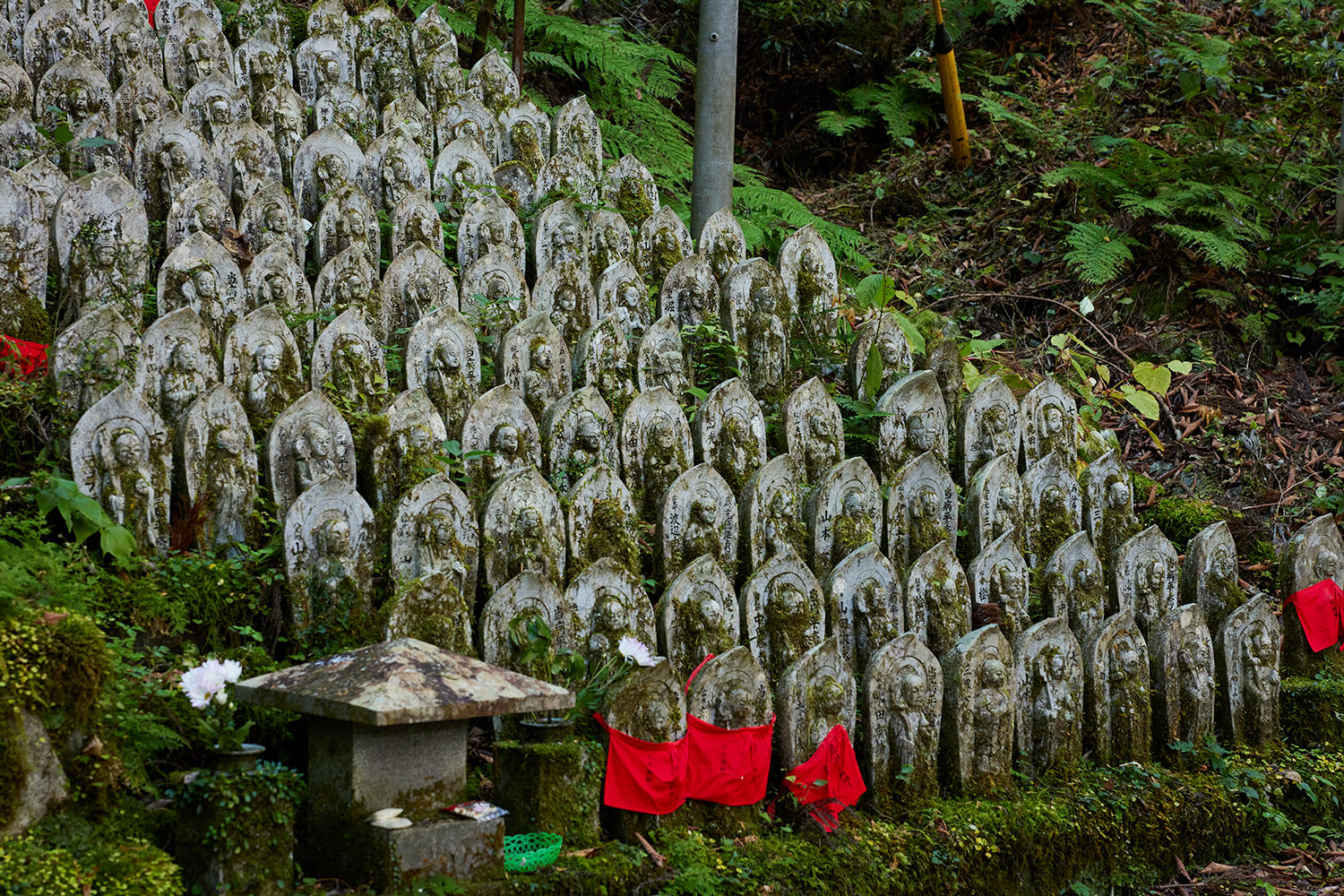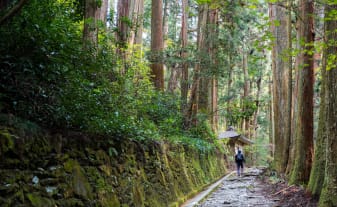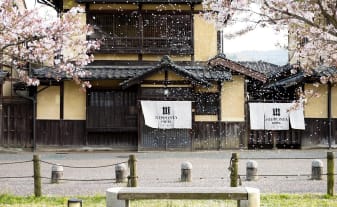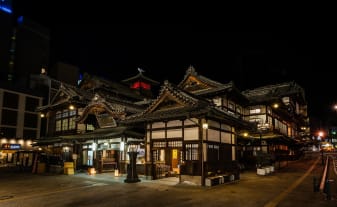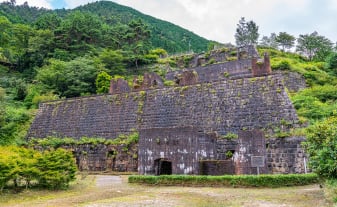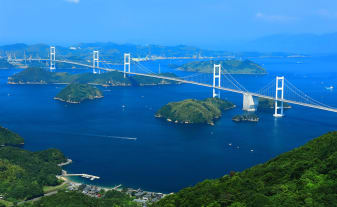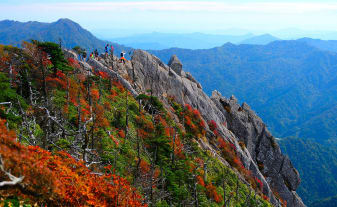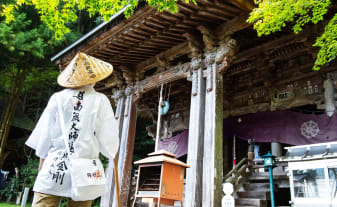 STORIES & GUIDES
STORIES & GUIDES
HENRO

The Shikoku pilgrimage route is one of the few circular-shaped pilgrimages in the world. It includes 88 'official' temples and numerous other sacred sites where Ku-kai (Kōbō Daishi) is believed to have trained or have spent time during the 9th Century. If walked, the entire route is about 1,200 kilometers long which allows one to experience the abundant natural surroundings of Shikoku and presents one with numerous opportunities to mix with the local people.
-
What is the Shikoku pilgrimage?
The Shikoku pilgrimage route (or Shikoku Henro) is one of the few circular-shaped pilgrimages in the world. It includes 88 ‘official’ temples and numerous other sacred sites where the Buddhist priest Kūkai (Kōbō Daishi) is believed to have trained or have spent time during the 9th Century. If walked, the entire route is about 1,200 kilometers long which allows one to experience the abundant natural surroundings of Shikoku and presents one with numerous opportunities to mix with the local people. This pilgrimage provides the an opportunity to reflect on one's life and to change for the better.
People’s motives for making this pilgrimage are varied. For example, some come for religious reasons, some to pray for healing or safety in the home, or some in memory of those who have passed away. As well, some come just to get away from regular life, some for recreation, or some to spend time alone in reflection and to find oneself. To people today, it is being re-discovered as a healing journey.
This pilgrimage should not be considered as a stamp relay, but as a religious journey. Do not worry too much. Just take the first step and as you travel around, you will have time to reflect on yourself and obtain something from this endeavor. The local people will welcome you for your decision to embark on the Shikoku pilgrimage. -
History
The first reference to the Shikoku pilgrimage appears in documents from around the 12th Century; however, specific temples or route are not mentioned. The present pilgrimage consisting of the 88 temples is thought to have formed between the late 16th and 17th Century. In the modern age with the development of roads, increasingly more people are coming to make the pilgrimage either by car or bus. However, in recent years the numbers of walking pilgrims have also been increasing.
-
Different Styles of a Shikoku pilgrim
There are many ways to make the Shikoku pilgrimage based on one’s schedule, physical health and budget.
Walking:
This will take about 6 weeks (aver 30km/day) and cost about 400,000yen. This is the most traditional way, but it takes the most time and money.
Charted bus:
This will take 9-12 days and cost about 250,000yen. There is a variety of bus plans provided by travel and bus companies and in each case an official guide (sendatsu) will accompany the group. At present, there are no bus tours for non-Japanese. If a non-Japanese would like to participate in a bus tour then sufficient Japanese ability is required.
Car:
This will take about 10 days and cost about 140,000yen. You can rent a car from the closest train station or airport, but make sure that you are familiar with the rules of the road. It might be possible to request a car with a navigational system that has audio guidance in English or another foreign language.
Note:
The above days and amount are estimates of costs while in Shikoku for accommodation, food, transportation etc. and will vary according to the individual and method of travel. If you are not walking, you will have to take a different route up the mountains.
Other methods:
Using a combination of public transportation (train, bus etc) and walking. Exclusively for non-Japanese there is an “All Shikoku Rail Pass” (2-5 days), which can be used on all railways in Shikoku. You can buy it once you arrive in Shikoku. -
Weather
March - May and October - November are the best months for good weather and comfortable temperatures.
The route along the Seto Inland Sea has the least amount of rainfall and the route along the Pacific Ocean has the most.
There is not much difference in temperature between the Seto Inland Sea side and Pacific Ocean side. -
Where to Start
Many people start at Temple 1, Ryōzenji in Tokushima prefecture, proceed in clockwise order and finish at Temple 88, Ōkuboji in Kagawa prefecture. This method is called jun-uchi and it is easier to follow the path markers this way. Others go in reverse order, called gyaku-uchi, but there is no rule as to what order you visit the temples.
Another method is called kugiri-uchi, which means completing a part of the pilgrimage at one time. This is quite common because most people cannot easily leave their everyday lives for a couple of weeks or longer. Thus some visit the temples in one prefecture or some complete miniature pilgrimages, ie between temples 13 and 17, or temples 71-77. It is important to start and proceed at your own speed and in your own way.
Temple Administration Office Hours
The office where you can have your pilgrimage book (nōkyōchō) stamped and signed for 300yen is open all year round from 7am to 5pm. Allow extra time here during the busy seasons. -
What to Wear
It is not necessary to use all of the following items, which can be bought at various temples and stores along the pilgrimage route, but this is the traditional style of attire. As a minimum, we recommended wearing a white vest and using a staff. If so, people will recognize, welcome and assist you as a pilgrim. As well, you will have more chances to talk with the local people.
1.sedge hat(菅笠 / sugegasa)
It is useful to block the sun or rain. It is not necessary to remove it when worshipping at a sacred site or when talking with temple staff.
2.white vest(白衣 / hakui or Hakue)
The white clothing worn by the pilgrim represents purity and innocence, however in the past it also held the meaning of a death shroud, symbolizing that the pilgrim was prepared to die at any time.
3.rosary(数珠 / juzu)
This is a very familiar religious object to the Japanese. If you hold this while holding your hands together, it is said that the illusions of the mind will disappear and good fortune will come upon you.
4.bell(持鈴 / Jirei)
The bell should be rung after each sutra is recited.
5.bag(頭陀袋/Zudabukuro)
Items such as candles, incense, nameslips, pilgrimage book etc are put in here.
6.stole(輪袈裟 / wagesa)
This is symbolic of the full Buddhist robe and shows one`s devotion. Choose the colour that you like.
7.staff(金剛杖 / kongōzue)
This is said to be the embodiment of Kōbō Daishi, who guides pilgrims around the route. Formerly it was used as a grave marker for pilgrims who passed away while on the pilgrimage.along the journey.
8.nameslips(納札 / osamefuda)
Write your name, address, date and wish on this and place it in the nameslip box at the Main hall and Daishi hall. Give it to people from whom you receive gifts.
9.pilgrimage book(納経帳 / nōkyōchō)
This acts as proof that you have visited each temple. Have it signed and stamped after worshipping at each sacred site. -
Proper etiquette at a temple
1.Main Gate(山門)
Stand to the left of the main gate, put your hands together and bow once.
2.Wash basin(水屋)
Wash your hands and mouth here, and then put on your wagesa and juzu.
3.Bell tower(鐘楼)
Ring the bell once. It is bad luck to ring it when you leave. Note: some temples have limited hours for ringing the bell.
4.Main Hall(本堂)
Place your nameslip and copied sutra in the appropriate box, light three sticks of incense and one candle, place a donation in the offertory box, stand to the left, put your hands together, and recite the sutras. At the Main Hall, it is common to begin reciting in order the Heart Sutra, then continue with the GoHonzon Shingon and Gohogo sutras. However, it is all right to pray silently. Later on, you might start reciting the sutras when you get used to hearing them.
5.Daishi Hall(大師堂)
Worship in the same way as at the Main hall.
6.Administration Office(納経所)
Get your pilgrimage book stamped and signed here. (Fee: 300yen)
7.Main gate(山門)
Exit the main gate on the left side, turn around, and bow once. -
Overview of the Temples on the Pilgrimage
After passing through Hosshin no Dojo (Place of Spiritual Awakening) in Tokushima and Shugyo no Dojo (Place of Practice) in Kochi, you will arrive at Bodai no Dojo (Place of Enlightenment) in Ehime. "Bodai" means breaking free from worldly desires and reaching a state of enlightenment. Ehime here is the furthest point from the start of the pilgrimage. It is a place equivalent to the turnaround point of the pilgrimage of the 88 temples of Shikoku. This route takes you from Uwa Sea and Bungo Channel to the calm Seto Inland Sea after passing through Mt. Ishizuchi - a scared mountain that is the highest peak in western Japan. You will find 26 temples - the most of any prefecture on the Shikoku pilgrimage - on this route. The road to the conclusion of your pilgrimage continues on.
-
Walking & Hiking
-
Cultural Heritage
-
Historic Sites & Monuments
-
Top Attractions
-
Cultural Experiences
Related Articles
Central Ehime (Chuyo)
Explore imposing hilltop castles, iconic bath houses, vermillion shrines, otherworldly karst formations, and the tallest mountain in western Japan.